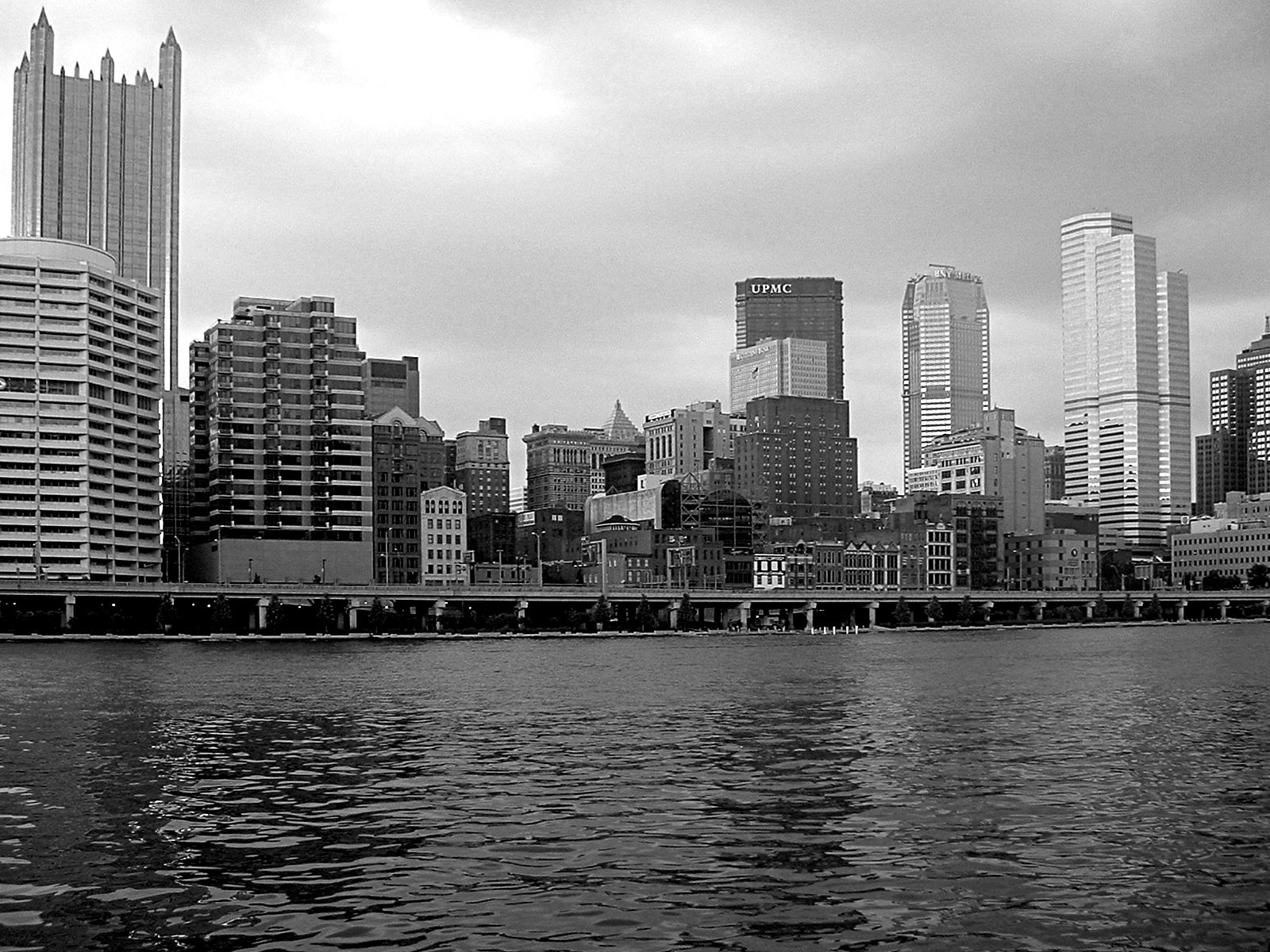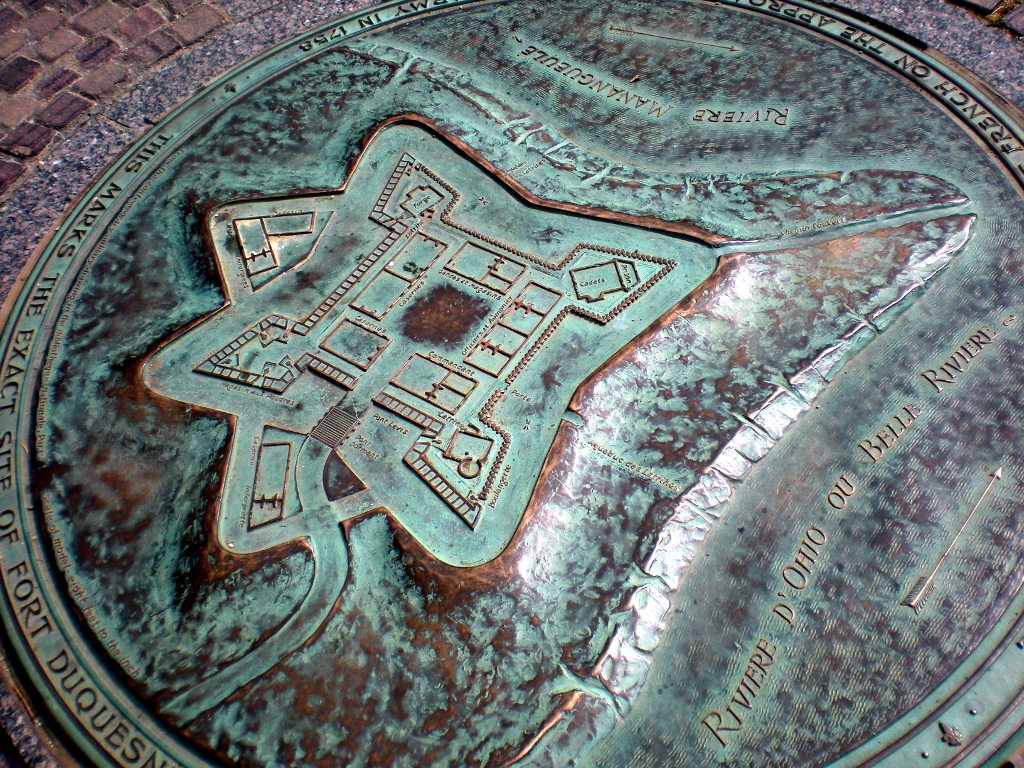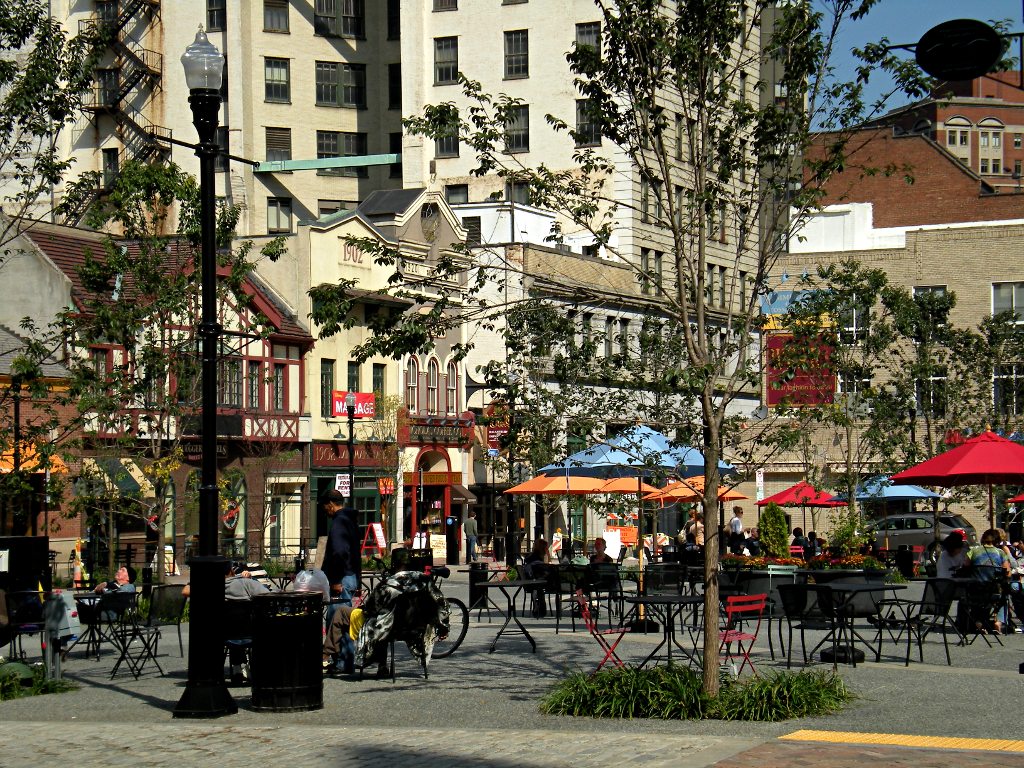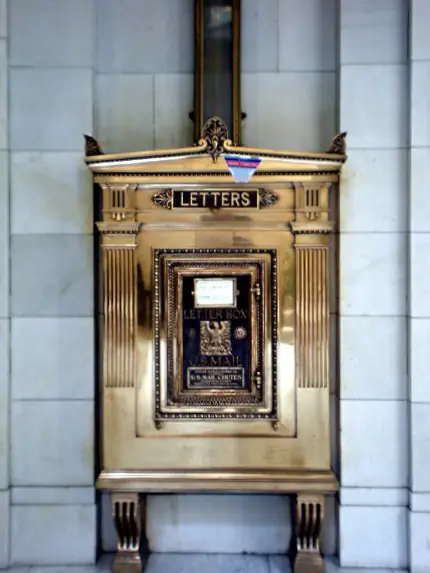
Downtown Pittsburgh seen from the Monongahela side, with the mighty river rolling in the foreground.

This marker sits right in the middle of what was once Fort Duquesne, the French attempt to hold a vast inland empire that the British coveted. The British attempts to dislodge the French began a world war unprecedented in its scale; we call it the French and Indian War, but in other parts of the world it’s known as the Seven Years’ War. The marker shows the plan of the fort and the French names of the rivers; note that the French, logically enough, considered the Allegheny a part of the Ohio, and the Monongahela a tributary. Had the outcome of the war been different, not only would Pittsburghers—or rather Duquesnois—speak French, but we would have only two rivers.

You can do all sorts of things with metal if you put your mind to it, but it helps if you adapt your design to the material. You can make an artificial Christmas tree with realistic steel branches and needles, and it won’t look nearly as artistic as this simple but effective stack of hamster balls, which is currently sitting in one corner of the refurbished Diamond.
The Diamond is a short walk from the Wood Street subway station.

The Diamond (or “Market Square” as it’s called on maps) has been torn up and rebuilt. Forbes Avenue no longer goes through it; instead, all traffic must skirt the edge of the square. The plan has been radically simplified, making the space more versatile. Whether it was worth all the money spent on the rebuilding is a question best left to political writers rather than your humble servant.

A brass letterbox in the lobby of the Frick Building downtown. Letters come down the shaft from the upper floors and into this miniature postal temple, where they are treated royally for a few hours until they have to be transferred to a humble mailbag.
UPDATE: Note the clarification from the kind commenter below, who points out that the shaft is no longer in use. What would H. C. Frick say if you told him he had to walk all the way down to the lobby to deposit his outgoing mail? (It’s a trick question: H. C. Frick would of course reply, “No, you have to walk all the way down to the lobby to deposit my outgoing mail.”)